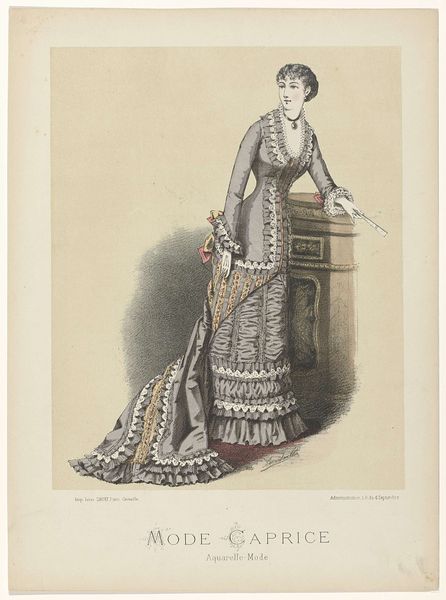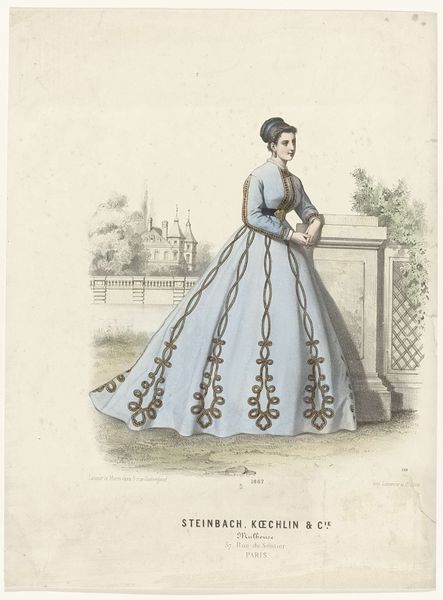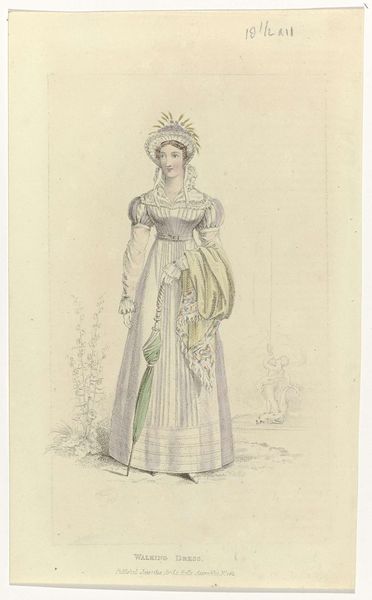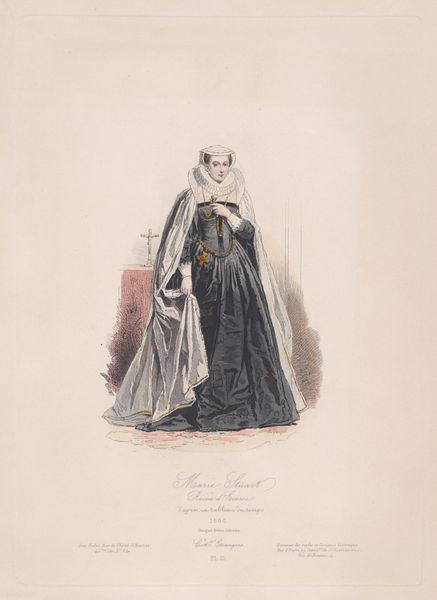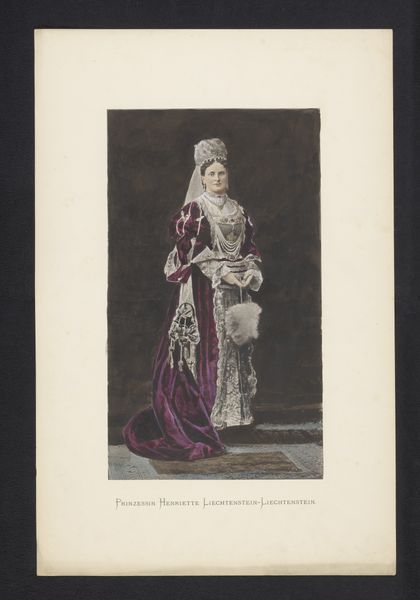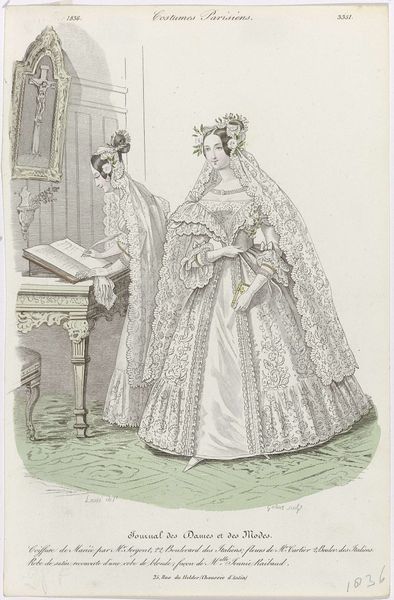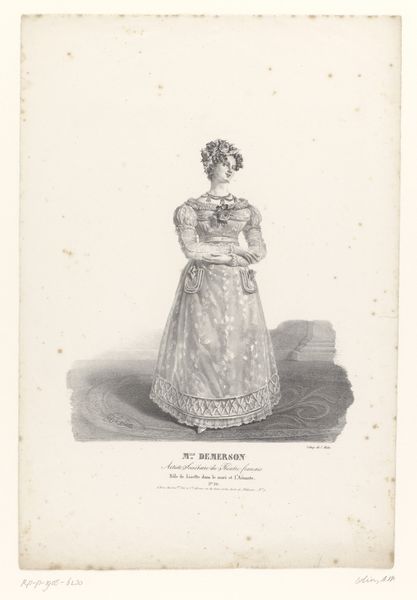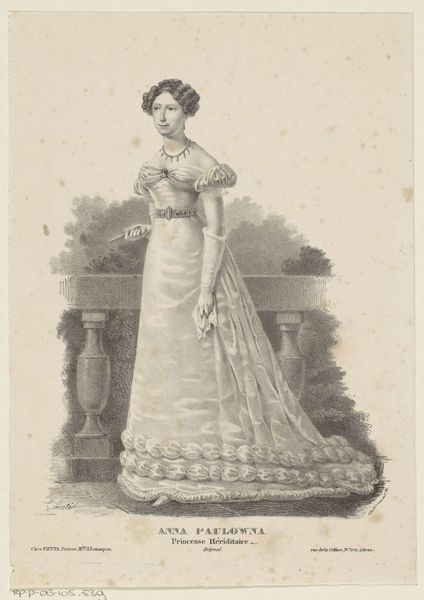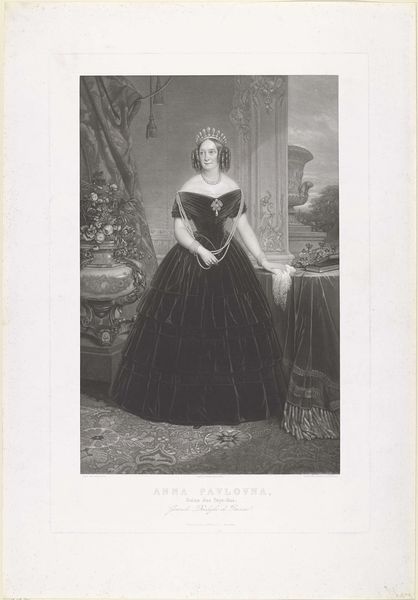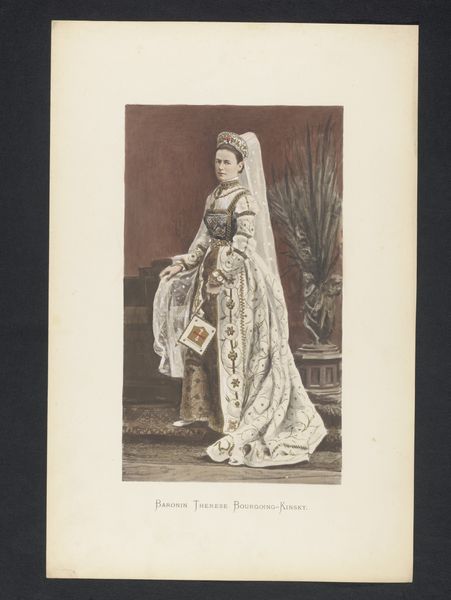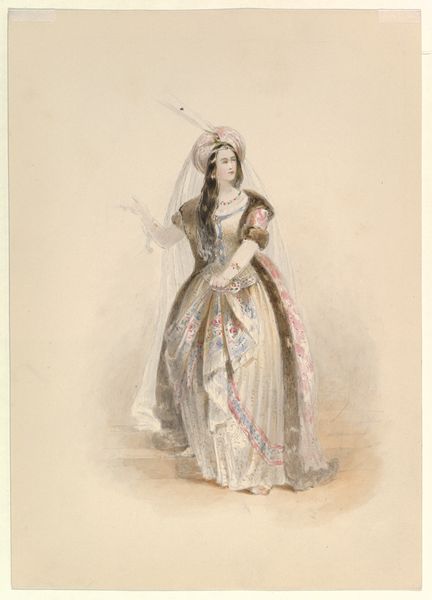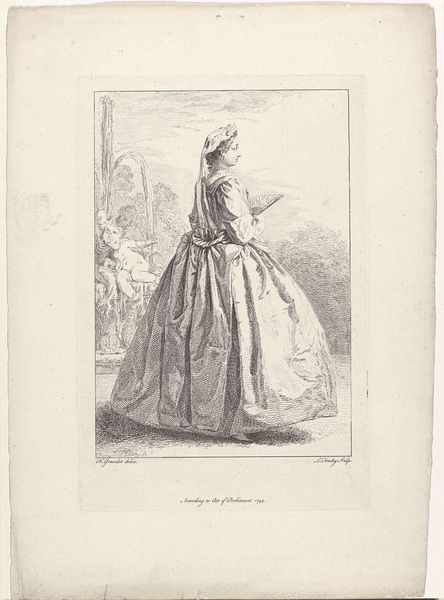
La France Élégante et Paris Élégant réunis, 1884, L.N. 484 : Toilette de Marié (...) 1884
0:00
0:00
#
portrait
#
art-nouveau
# print
#
book
#
pencil sketch
#
old engraving style
#
decorative-art
Dimensions: height 359 mm, width 279 mm
Copyright: Rijks Museum: Open Domain
This print of a bride's wedding dress comes from an anonymous fashion plate-maker in France, 1884. As the title "La France Élégante et Paris Élégant Réunis" tells us, this image reflects the cultural norms of the French elite, and how such norms are disseminated through the institutional structure of the fashion press. Here the visual codes are clear: the bride’s dress, veil, flowers, and posture are designed to convey purity, virtue, and wealth. The location, suggested through a cursory sketch of a bourgeois interior, is presumably a church or a place of similar social importance. The historical association of the monarchy with such garments—think of Marie Antoinette’s famous portraits—suggests the persistence of aristocratic values, even after the French Revolution. By focusing on the ways in which the institutions of art, fashion, and journalism shape the production and reception of images, we can better understand the social conditions that allow images to be made and distributed. Studying fashion plates in national libraries, newspaper archives, and even museum collections lets us interpret the political meanings embedded in the styles, tastes, and customs of the past.
Comments
No comments
Be the first to comment and join the conversation on the ultimate creative platform.
